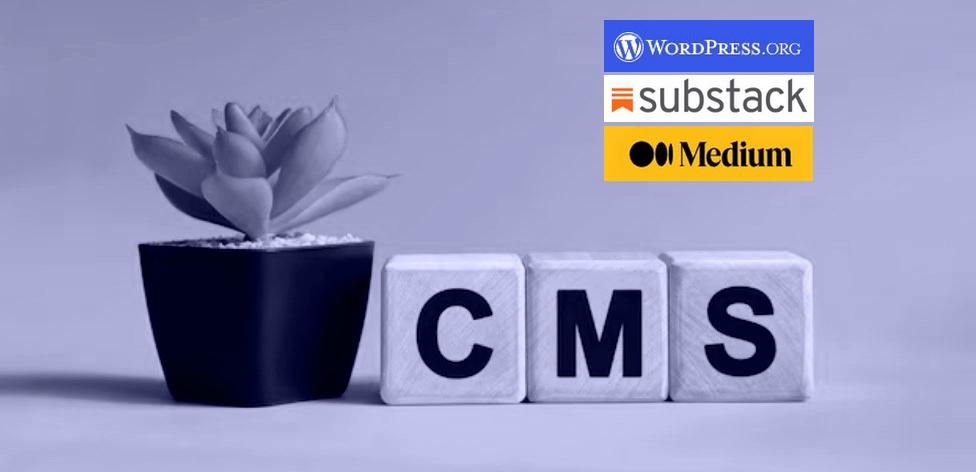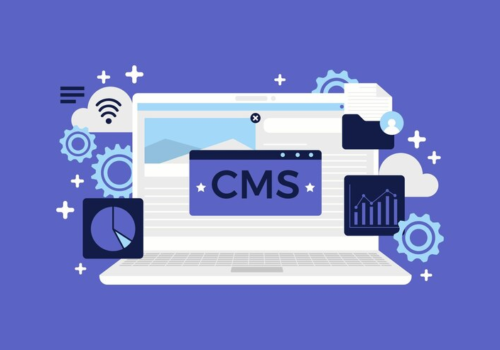Exploring Content Management: Medium, Substack, and WP
In the rapidly evolving digital landscape, selecting the right content management system (CMS) is crucial for successful online publishing. Medium, Substack, and WordPress stand out as three leading platforms, each with unique features and user bases.
This article delves into a detailed comparison of these platforms, examining their strengths, weaknesses, and suitability for different types of users. Whether you’re a blogger, a business owner, or an independent creator, understanding these platforms will empower you to make an informed decision tailored to your specific needs.
WordPress – The Flexible Giant
Often hailed as the cornerstone of modern web content management, WordPress has evolved from a simple blogging tool to a comprehensive solution for website creation and management. This platform’s adaptability has made it a go-to choice for a wide array of websites, from personal blogs to complex corporate sites.
- Broad Functionality: Starting as a blogging tool, WordPress now offers extensive website hosting services. Users can create diverse websites, ranging from simple blogs to full-fledged e-commerce platforms;
- Design and Customization: WordPress boasts a vast library of themes and plugins, allowing users to tailor their website’s appearance and functionality. This includes SEO optimization tools and integration with various third-party applications;
- Community and Support: A robust community and frequent updates provide users with resources and security enhancements.
Pros and Cons:
Pros:
- Dominant in the CMS market, powering a significant portion of the internet’s websites;
- Extensive customization with themes and plugins;
- Strong focus on security and mobile responsiveness;
- SEO optimization capabilities;
- Flexibility for various website requirements;
- Ownership of your website content and structure.
Cons:
- Complexity in setup and management for beginners;
- Technical knowledge required for advanced features;
- Potential security vulnerabilities if not maintained properly.
Medium – The Writer’s Community
This platform started as an egalitarian space for writers, offering a powerful domain authority that assists in content ranking. Medium excels in content curation, aligning articles with readers’ interests, enhancing discovery and engagement.
- User Experience: Medium’s streamlined interface focuses on content and reading experience, with social sharing features that enhance visibility;
- Monetization and Audience: The platform’s algorithmic curation and monetization avenues attract writers seeking broader exposure and potential earnings from their writing.
Pros and Cons:
Pros:
- User-friendly setup process;
- Access to a large, built-in reader base;
- Emphasis on content quality and reader engagement.
Cons:
- Limited control over site customization and branding;
- Lack of content ownership and potential censorship issues.
Substack – The Newsletter Pioneer
Emerging as a specialized platform for newsletters and blogging, Substack empowers creators to establish and monetize a dedicated subscriber base. It’s particularly suited for writers focusing on niche topics or seeking a more intimate connection with their audience.
- Features and Flexibility: Substack offers customizable templates, audience analytics, and efficient payment processing. Its model is conducive to both free and paid subscription formats;
- Community Building: The platform facilitates direct engagement with subscribers, fostering a loyal and supportive reader community.
Pros and Cons:
Pros:
- Simplified setup and content management;
- No need for technical website maintenance;
- Transparent fee structure for monetization;
- Direct access to and interaction with subscribers.
Cons:
- Limited design customization options;
- Less emphasis on SEO compared to WordPress;
- Absence of full content ownership.
Which One Should You Choose?
Deciding on a content management system often leads to the question of exclusivity. However, the versatility of digital platforms today means that one doesn’t have to be confined to a single choice. The decision can be strategically tailored to your unique business goals and the stage of your digital journey.
- Medium for Emerging Creators: Ideal for individuals starting their content creation journey, Medium serves as a formidable platform for publishing articles and blogs. Its user-friendly interface and established audience base make it a prime choice for those aiming to build their online presence;
- Substack for Integrated Marketing: For creators focusing on integrating their content with email marketing, Substack offers a streamlined approach to nurturing a dedicated subscriber base through newsletters;
- WordPress for Scalability and Functionality: Entrepreneurs and businesses targeting a less competitive niche with a vision for growth will find WordPress’s flexibility invaluable. It’s not just a blogging tool but a comprehensive solution for creating a full-fledged website with diverse functionalities, ideal for those with limited web development resources.
The key is to align your platform choice with your objectives, ensuring it complements your overall content strategy without straining your budget. With numerous options available, a focused and strategic approach can significantly enhance your digital content impact.
Tailoring Your Platform Choice to Content Type
When considering which platform to use, the nature of your content plays a significant role. Each platform offers unique strengths tailored to different content types:
- Long-Form and Niche Content: Platforms like Medium are conducive to long-form, story-driven content. Their audience targeting mechanisms make them suitable for niche topics;
- Email-Centric Content: For content creators whose strategy revolves around building and engaging an email list, Substack’s newsletter-centric model is ideal;
- Multimedia and Interactive Content: WordPress, with its extensive plugin ecosystem, is particularly adept at handling a variety of content formats, including video, audio, and interactive elements.
Remember, the platform you choose should not only cater to your current content needs but also be scalable to accommodate future expansion and diversification of your content strategy.
Complementing Your Strategy with Diverse Platforms
Diversifying your content distribution across multiple platforms can enhance your digital footprint and audience reach. Here’s how you can effectively leverage different platforms:
Cross-Platform Synergy: Use Medium for thought leadership pieces, Substack for personalized newsletters, and WordPress for a comprehensive web presence.
Content Repurposing: Repurpose content across platforms to maximize reach. For example, a detailed blog post on WordPress can be condensed into a newsletter for Substack subscribers.
As you navigate the diverse world of content management systems, consider exploring the differences between Kajabi and WordPress for further insights into how different tools can serve varied business needs.
Conclusion
The decision to use WordPress, Substack, Medium, or even an alternative like Ghost hinges on a careful assessment of your content goals, audience, and the kind of interaction you seek. WordPress stands out for its unmatched customization and control, making it ideal for those needing a robust online presence. In contrast, Medium and Substack offer simplicity and user-friendliness, appealing to creators prioritizing content distribution and reader engagement.
Ghost emerges as another contender for those valuing a clean, content-focused interface. Regardless of the platform chosen, the key is to select a tool that aligns with your content strategy, enabling you to produce engaging and impactful content for your audience. This guide, starting from the introduction, aims to provide a comprehensive understanding of each platform’s strengths and how they can be harnessed to fulfill your unique content creation and marketing objectives.





